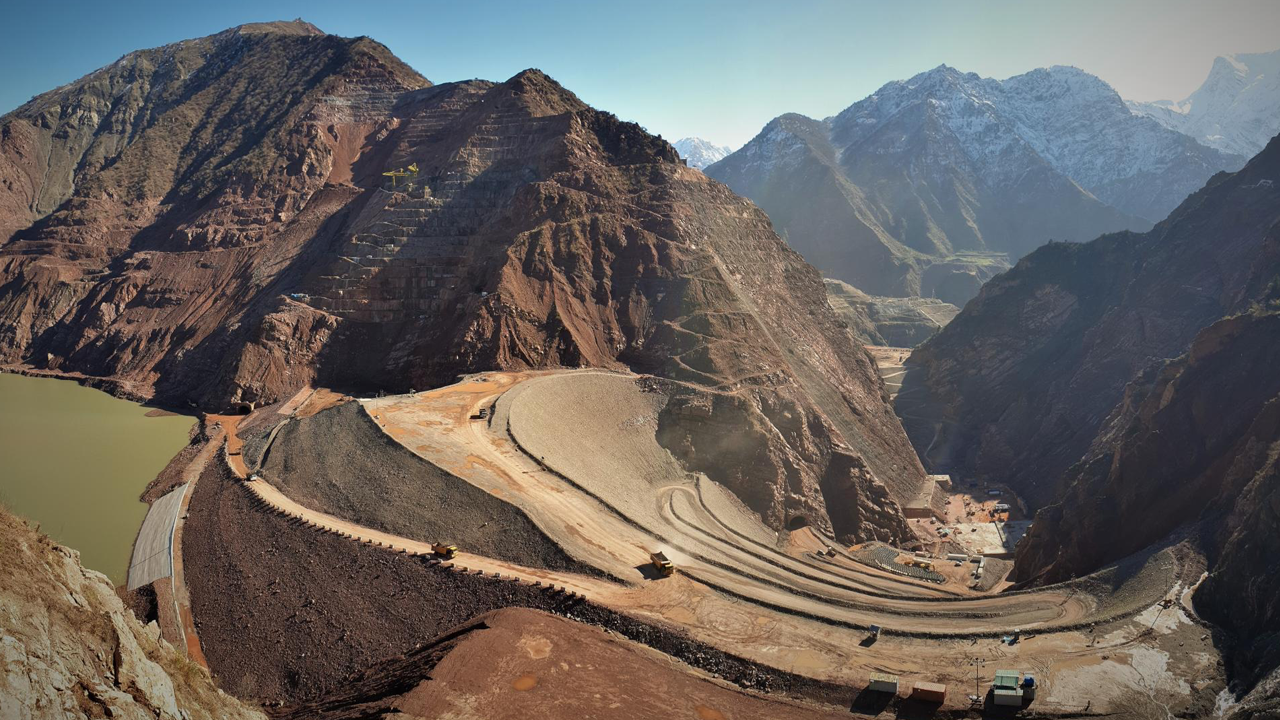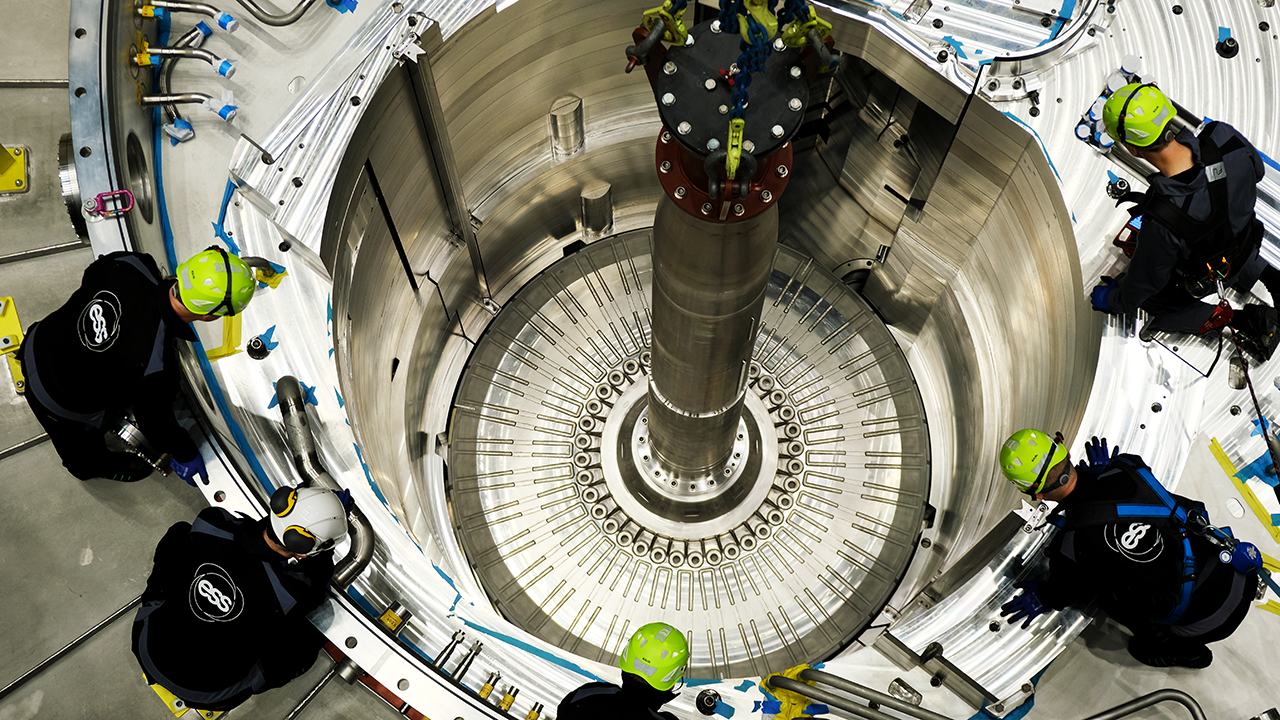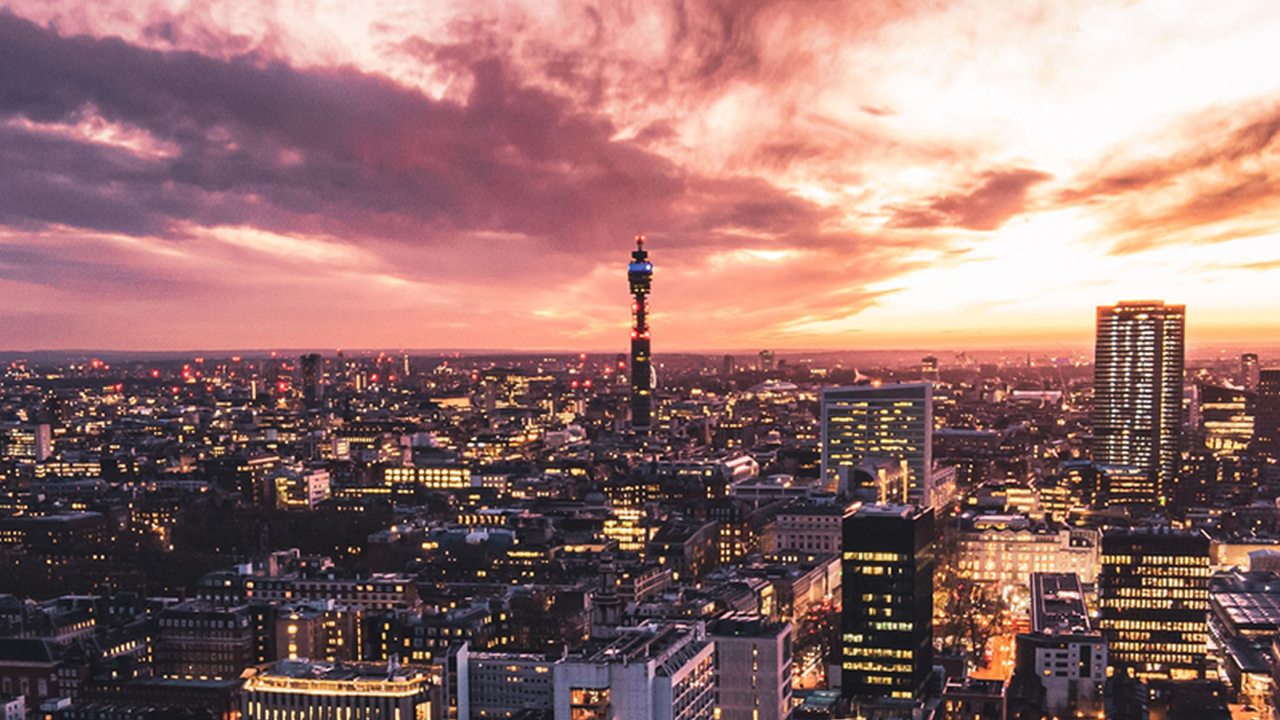The Race to Expand Monaco's Borders
- Youtube Views 782,659 VIDEO VIEWS
Video hosted and narrated by Fred Mills. This video contains paid promotion for Odoo.
MONACO is absolutely tiny.
The second smallest country in the world, its entire area could fit into Central Park and then some. It’s also synonymous with one event in particular.
Once a year, the country closes huge sections of its roads to welcome the likes of Ferrari, Red Bull and McClaren for the Monaco Grand Prix. It’s the most prestigious race in the world and has been part of the F1 calendar since the 1950s.
It’s lavished in glamour and one of the most challenging tracks around with the street circuit squeezed into tight-knit boundaries. Monaco is just two miles long and only a mile wide but why does that matter? Well, the nation is incredibly desirable.
Couple that with its small borders and a problem emerges: it’s the most densely populated country in the world.
It’s not like it has much room to work - it’s hemmed in by France and is facing a space crisis. There was only one direction for land to grow: out into the Mediterranean.
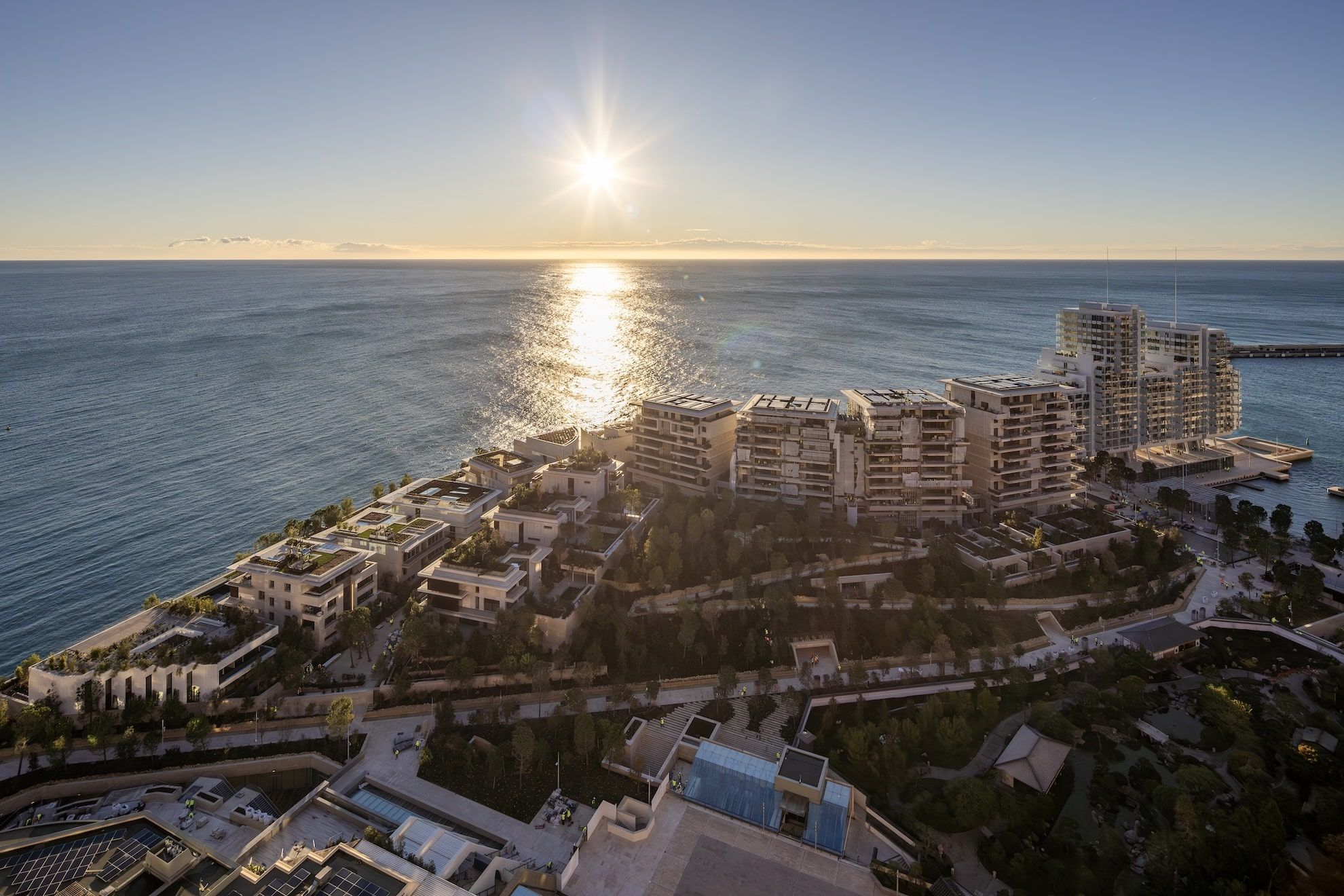
Above: Monaco's $2 billion extension known as Mareterra or Portier Cove. Courtesy of Mareterra - SAM l'Anse du Portier.
This is Monaco
Monaco is the playground of the rich and famous, not to mention the backdrop for some of the big screen’s largest blockbusters.
It's an exclusive haven along the French riviera, surrounded by its French neighbour and nestled in a cove along the Mediterranean Sea.
It wasn’t always quite so small. In fact, it used to be a lot bigger but in 1861, it gave up 95% of its land in exchange for four million francs and recognition from France that it's a sovereign state.
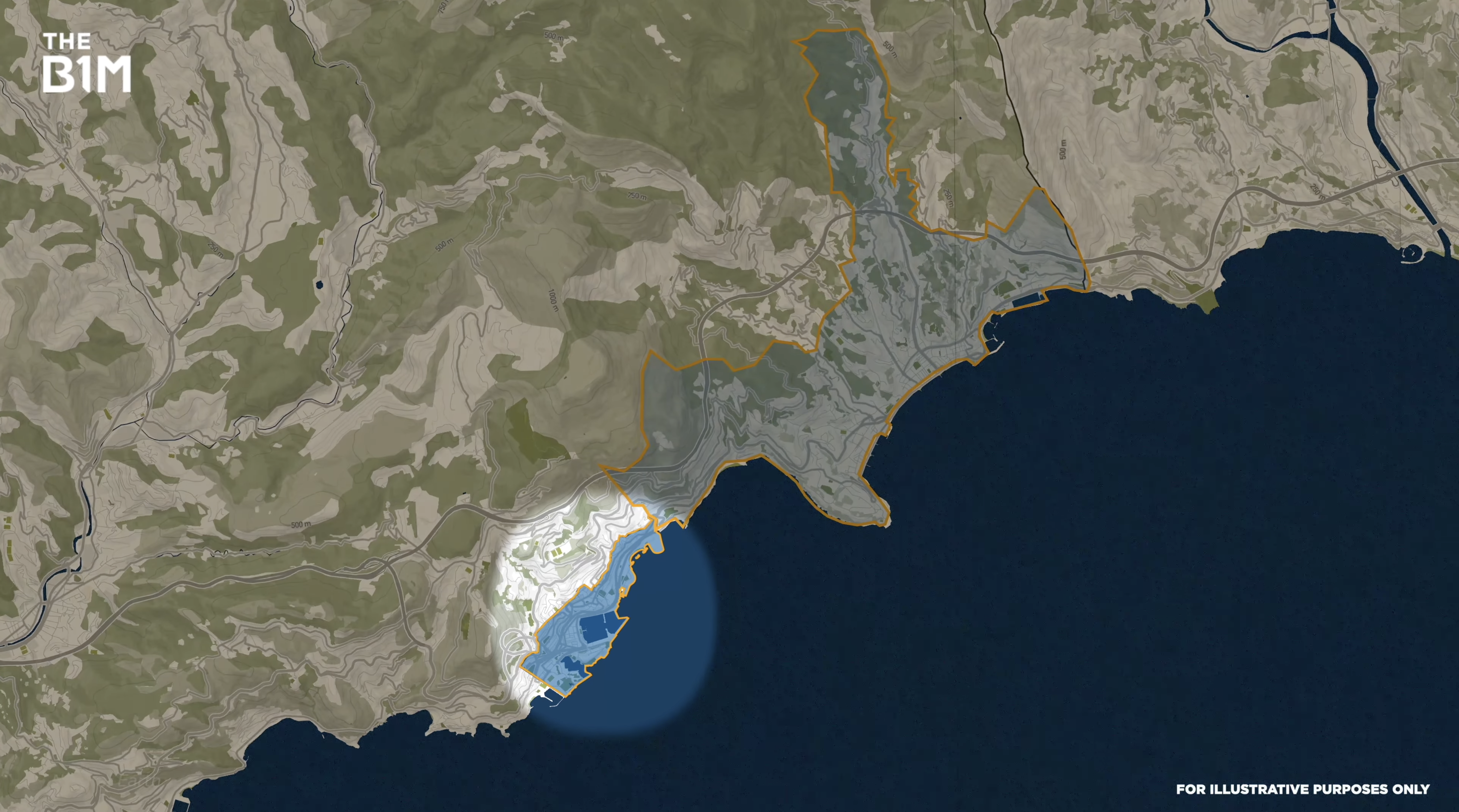
Above: Today, Monaco is just a fraction of its original size.
Today, this patch of land, less than half the size of Universal Orlando, is home to 37,000 people. Since the 1950s, the population has practically doubled and more people means more housing and more housing needs more space.
Using state-of-the-art techniques, Monaco expanded its land mass out to sea by six hectares, a 3% overall increase.
Growing Monaco's footprint
We’ve been reclaiming land from the sea for hundreds of years - it’s how Monaco’s managed to grow by more than 20% since 1880 and Mareterra, or Portier Cove is just the latest addition to the country’s footprint. But just because they’ve done it before, it doesn’t mean it’s straightforward.
There are various challenges with expanding your land mass including habitat destruction, impacting underwater ecosystems, pollution from sediment run-off and long-term stability but Monaco’s approach was in good hands.
Supported by a cast of engineers and marine biologists, a dream team of Renzio Piano, Denis Valode and Michel Desvigne created the new district’s design.
Monaco sits in an area rich in sea life. The Mediterranean is home to nearly 6,000 different species and the extension lies directly between two marine reserves.
The seagrass there is known as Posidonia oceanica. The meadows are declining around the world but they play a vital ecological role - not only are they important for sea-life but they protect coasts from erosion and storms and sequester carbon.
It made preserving the underwater environment crucial. Marine biologists and divers relocated large sections of the seagrass with around 500sqm transplanted using the sod method, a technique where you mechanically move large areas and re-home it with strong anchorage.
Not only was it successful but this method has the potential to completely change the way we look at land reclamation and the protection of our seas.
Mareterra was designed with a curved footprint to respect the natural flow of the sea, or currentology and that footprint was created using a belt of caissons.
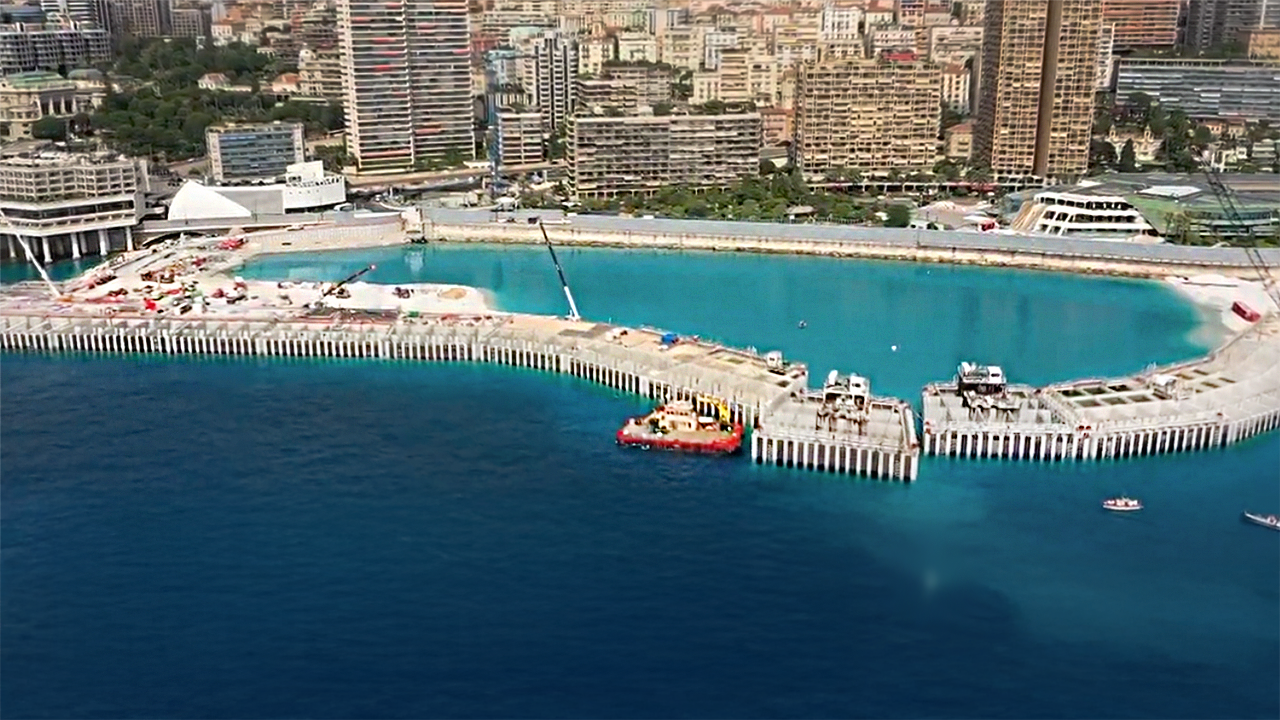
Above: 18 caissons, weighing around 10,000 tonnes each, were placed to create the belt for Mareterra. Courtesy of Mareterra - SAM l'Anse du Portier.
A caisson is a large water-tight box used for bridges, piers and seawalls. In this case, the belt acts as a wall, stopping the fill material from floating away.
Contractors spent three years dredging silt from the seafloor to expose bedrock for the caissons. Specially designed, submerged anti-turbidity screens were installed around the site to minimise the impact of the dredging and sediment leaking.
18 caissons, weighing about 10,000 tonnes each, were built in Marseille and towed on the sea up to 800 metres away from the boat. It took about three to five days to move each block, depending on the weather.
Once in Monaco, the caissons were placed to build the belt. To create the land mass the buildings of Mareterra would sit on, the space was then filled with over 1.5 million tonnes of rock and marine sand.
Using caissons meant nothing needed to be implemented below sea level, therefore minimising the impact on the seabed and they double up as homes for wildlife too. It’s hoped grooves on their surfaces will encourage algae growth and foster biodiversity.
"It’s gonna be the greenest part of Monaco", said Guy-Thomas Levy-Soussan, the General Manager of Mareterra. "The project includes a seafront promenade, a park, a marina, retail, restaurants and some cultural space contributing to the economic and social vibrancy of the principality. Altogether it brings a new area and new dimension to Monaco."
The final product is stunning and exactly what you’d expect from a development in Monaco. The big question is, ‘what happens if the sea levels rise?’ Well, that’s been thought about too - every structure can be raised.
Continuing Mareterra’s theme of modern design, the harbour has moving piers that can be adjusted depending on the level of the sea, to prevent coastal flooding.
Thanks to the impressive design and construction, all properties sold before the inauguration in December 2024 but the fact those homes sold so quickly raises another question - is this 3% expansion big enough for the future?
Monaco's expansion problem
Mareterra is about as big as it possibly could be. Land reclamation can only be achieved to certain depths and this new piece of land is already 50 metres deep. It means this will probably be Monaco’s final land reclamation project - ever.
"The problem with the Mediterranean is that after 50 metres, it becomes very steep. From 50m you go down to 80m, to 100m to 200m and then of course there are ecological and financial concerns so it’s becoming really difficult", said Levy-Soussan.
It’s no secret the global population is only going to go up. In the next 75 years, it’s expected to hit 10 billion but without land reclamation, or an ill-advised invasion of France, what can Monaco do?
It’s certainly an intriguing question. One solution is to look at what another tiny nation has done, 5,000 miles away in the Indian Ocean. The Maldives is the smallest country in Asia and is a truly stunning dream paradise but it faces a critical issue - about 80% of its land mass is less than one metre above sea level.
The nation is working on a design of the future to solve the problem - a floating city. Due to be completed in 2027, the city comprises connected hexagonal islands. The concrete hulls are then screwed to the seabed with huge steel stilts that allow it to move with the motion of the ocean.
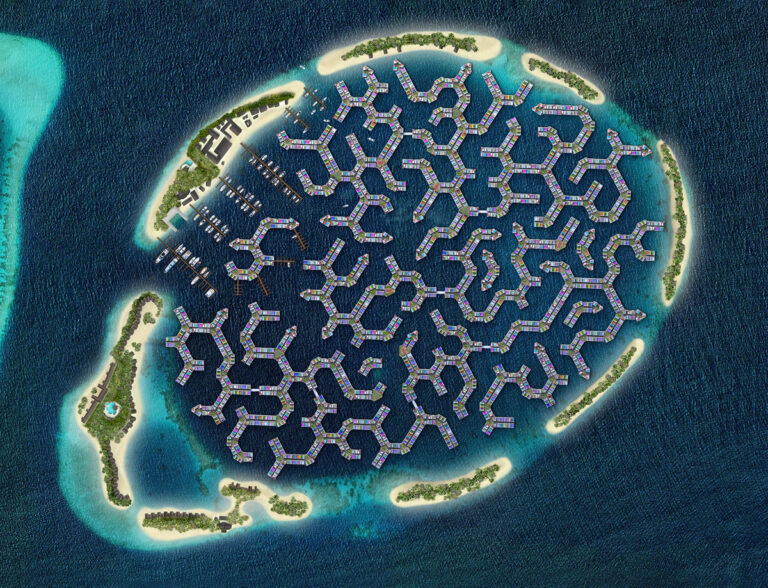
Above: In the Maldives, a floating city is being created to combat rising sea levels. Courtesy of Dutch Docklands.
Challenges still remain with floating cities - water depth and the generation of power away from the mainland have to be considered but it could be a viable solution for the future, especially as Monaco is unlikely to build upwards.
The nation already has skyscrapers, the tallest being the 170 metre Odeon Tower but realistically, the likelihood we see a swathe of similar towers being approved is low. Monaco sits on the side of a mountain, next to the sea, making its geology challenging and as we know, space for new developments is limited.
It's worth noting, skyscrapers tend to spoil the coastal views and so what happens next for Monaco is anyone’s guess.
But for the time being the nation can take pride in a job well done. Mareterra seamlessly blends into the coastline as if it’s been there for years and for now, this extension answers the nation’s housing issues.
What Monaco’s going to do in years to come if its population increases, we’ll have to wait and see but Mareterra is an example of what can be achieved.
This is land reclamation like you've never seen it before and a model that could soon be the gold standard adopted around the world.
This video and article contain paid promotion for Odoo.
Video narrated and hosted by Fred Mills. Additional footage and images courtesy of Mareterra - SAM l'Anse du Portier, Valode and Pistre, Hufton+Crow, Bouygues Travaux Publics, Edward Wright, Philippe Fitte, Olivier Huitel, color line / CC BY 2.0, Pat Guiney / CC BY 2.0, Loïc Thébaud, RPBW, Noë & Associates, Dutch Docklands, the Dronalist, BBC News, Interceptor73 / CC BY 2.0, United Autosports / CC BY-SA 2.0, Amazon MGM Studios, Wilson and Broccoli and Marvel Studios.
We welcome you sharing our content to inspire others, but please be nice and play by our rules.
Monaco is the playground of the rich and famous, not to mention the backdrop for some of the big screen’s largest blockbusters.
It's an exclusive haven along the French riviera, surrounded by its French neighbour and nestled in a cove along the Mediterranean Sea.
It wasn’t always quite so small. In fact, it used to be a lot bigger but in 1861, it gave up 95% of its land in exchange for four million francs and recognition from France that it's a sovereign state.

Above: Today, Monaco is just a fraction of its original size.
Today, this patch of land, less than half the size of Universal Orlando, is home to 37,000 people. Since the 1950s, the population has practically doubled and more people means more housing and more housing needs more space.
Using state-of-the-art techniques, Monaco expanded its land mass out to sea by six hectares, a 3% overall increase.
Growing Monaco's footprint
We’ve been reclaiming land from the sea for hundreds of years - it’s how Monaco’s managed to grow by more than 20% since 1880 and Mareterra, or Portier Cove is just the latest addition to the country’s footprint. But just because they’ve done it before, it doesn’t mean it’s straightforward.
There are various challenges with expanding your land mass including habitat destruction, impacting underwater ecosystems, pollution from sediment run-off and long-term stability but Monaco’s approach was in good hands.
Supported by a cast of engineers and marine biologists, a dream team of Renzio Piano, Denis Valode and Michel Desvigne created the new district’s design.
Monaco sits in an area rich in sea life. The Mediterranean is home to nearly 6,000 different species and the extension lies directly between two marine reserves.
The seagrass there is known as Posidonia oceanica. The meadows are declining around the world but they play a vital ecological role - not only are they important for sea-life but they protect coasts from erosion and storms and sequester carbon.
It made preserving the underwater environment crucial. Marine biologists and divers relocated large sections of the seagrass with around 500sqm transplanted using the sod method, a technique where you mechanically move large areas and re-home it with strong anchorage.
Not only was it successful but this method has the potential to completely change the way we look at land reclamation and the protection of our seas.
Mareterra was designed with a curved footprint to respect the natural flow of the sea, or currentology and that footprint was created using a belt of caissons.

Above: 18 caissons, weighing around 10,000 tonnes each, were placed to create the belt for Mareterra. Courtesy of Mareterra - SAM l'Anse du Portier.
A caisson is a large water-tight box used for bridges, piers and seawalls. In this case, the belt acts as a wall, stopping the fill material from floating away.
Contractors spent three years dredging silt from the seafloor to expose bedrock for the caissons. Specially designed, submerged anti-turbidity screens were installed around the site to minimise the impact of the dredging and sediment leaking.
18 caissons, weighing about 10,000 tonnes each, were built in Marseille and towed on the sea up to 800 metres away from the boat. It took about three to five days to move each block, depending on the weather.
Once in Monaco, the caissons were placed to build the belt. To create the land mass the buildings of Mareterra would sit on, the space was then filled with over 1.5 million tonnes of rock and marine sand.
Using caissons meant nothing needed to be implemented below sea level, therefore minimising the impact on the seabed and they double up as homes for wildlife too. It’s hoped grooves on their surfaces will encourage algae growth and foster biodiversity.
"It’s gonna be the greenest part of Monaco", said Guy-Thomas Levy-Soussan, the General Manager of Mareterra. "The project includes a seafront promenade, a park, a marina, retail, restaurants and some cultural space contributing to the economic and social vibrancy of the principality. Altogether it brings a new area and new dimension to Monaco."
The final product is stunning and exactly what you’d expect from a development in Monaco. The big question is, ‘what happens if the sea levels rise?’ Well, that’s been thought about too - every structure can be raised.
Continuing Mareterra’s theme of modern design, the harbour has moving piers that can be adjusted depending on the level of the sea, to prevent coastal flooding.
Thanks to the impressive design and construction, all properties sold before the inauguration in December 2024 but the fact those homes sold so quickly raises another question - is this 3% expansion big enough for the future?
Monaco's expansion problem
Mareterra is about as big as it possibly could be. Land reclamation can only be achieved to certain depths and this new piece of land is already 50 metres deep. It means this will probably be Monaco’s final land reclamation project - ever.
"The problem with the Mediterranean is that after 50 metres, it becomes very steep. From 50m you go down to 80m, to 100m to 200m and then of course there are ecological and financial concerns so it’s becoming really difficult", said Levy-Soussan.
It’s no secret the global population is only going to go up. In the next 75 years, it’s expected to hit 10 billion but without land reclamation, or an ill-advised invasion of France, what can Monaco do?
It’s certainly an intriguing question. One solution is to look at what another tiny nation has done, 5,000 miles away in the Indian Ocean. The Maldives is the smallest country in Asia and is a truly stunning dream paradise but it faces a critical issue - about 80% of its land mass is less than one metre above sea level.
The nation is working on a design of the future to solve the problem - a floating city. Due to be completed in 2027, the city comprises connected hexagonal islands. The concrete hulls are then screwed to the seabed with huge steel stilts that allow it to move with the motion of the ocean.

Above: In the Maldives, a floating city is being created to combat rising sea levels. Courtesy of Dutch Docklands.
Challenges still remain with floating cities - water depth and the generation of power away from the mainland have to be considered but it could be a viable solution for the future, especially as Monaco is unlikely to build upwards.
The nation already has skyscrapers, the tallest being the 170 metre Odeon Tower but realistically, the likelihood we see a swathe of similar towers being approved is low. Monaco sits on the side of a mountain, next to the sea, making its geology challenging and as we know, space for new developments is limited.
It's worth noting, skyscrapers tend to spoil the coastal views and so what happens next for Monaco is anyone’s guess.
But for the time being the nation can take pride in a job well done. Mareterra seamlessly blends into the coastline as if it’s been there for years and for now, this extension answers the nation’s housing issues.
What Monaco’s going to do in years to come if its population increases, we’ll have to wait and see but Mareterra is an example of what can be achieved.
This is land reclamation like you've never seen it before and a model that could soon be the gold standard adopted around the world.
This video and article contain paid promotion for Odoo.
Video narrated and hosted by Fred Mills. Additional footage and images courtesy of Mareterra - SAM l'Anse du Portier, Valode and Pistre, Hufton+Crow, Bouygues Travaux Publics, Edward Wright, Philippe Fitte, Olivier Huitel, color line / CC BY 2.0, Pat Guiney / CC BY 2.0, Loïc Thébaud, RPBW, Noë & Associates, Dutch Docklands, the Dronalist, BBC News, Interceptor73 / CC BY 2.0, United Autosports / CC BY-SA 2.0, Amazon MGM Studios, Wilson and Broccoli and Marvel Studios.
We welcome you sharing our content to inspire others, but please be nice and play by our rules.
We’ve been reclaiming land from the sea for hundreds of years - it’s how Monaco’s managed to grow by more than 20% since 1880 and Mareterra, or Portier Cove is just the latest addition to the country’s footprint. But just because they’ve done it before, it doesn’t mean it’s straightforward.
There are various challenges with expanding your land mass including habitat destruction, impacting underwater ecosystems, pollution from sediment run-off and long-term stability but Monaco’s approach was in good hands.
Supported by a cast of engineers and marine biologists, a dream team of Renzio Piano, Denis Valode and Michel Desvigne created the new district’s design.
Monaco sits in an area rich in sea life. The Mediterranean is home to nearly 6,000 different species and the extension lies directly between two marine reserves.
The seagrass there is known as Posidonia oceanica. The meadows are declining around the world but they play a vital ecological role - not only are they important for sea-life but they protect coasts from erosion and storms and sequester carbon.
It made preserving the underwater environment crucial. Marine biologists and divers relocated large sections of the seagrass with around 500sqm transplanted using the sod method, a technique where you mechanically move large areas and re-home it with strong anchorage.
Not only was it successful but this method has the potential to completely change the way we look at land reclamation and the protection of our seas.
Mareterra was designed with a curved footprint to respect the natural flow of the sea, or currentology and that footprint was created using a belt of caissons.

Above: 18 caissons, weighing around 10,000 tonnes each, were placed to create the belt for Mareterra. Courtesy of Mareterra - SAM l'Anse du Portier.
A caisson is a large water-tight box used for bridges, piers and seawalls. In this case, the belt acts as a wall, stopping the fill material from floating away.
Contractors spent three years dredging silt from the seafloor to expose bedrock for the caissons. Specially designed, submerged anti-turbidity screens were installed around the site to minimise the impact of the dredging and sediment leaking.
18 caissons, weighing about 10,000 tonnes each, were built in Marseille and towed on the sea up to 800 metres away from the boat. It took about three to five days to move each block, depending on the weather.
Once in Monaco, the caissons were placed to build the belt. To create the land mass the buildings of Mareterra would sit on, the space was then filled with over 1.5 million tonnes of rock and marine sand.
Using caissons meant nothing needed to be implemented below sea level, therefore minimising the impact on the seabed and they double up as homes for wildlife too. It’s hoped grooves on their surfaces will encourage algae growth and foster biodiversity.
"It’s gonna be the greenest part of Monaco", said Guy-Thomas Levy-Soussan, the General Manager of Mareterra. "The project includes a seafront promenade, a park, a marina, retail, restaurants and some cultural space contributing to the economic and social vibrancy of the principality. Altogether it brings a new area and new dimension to Monaco."
The final product is stunning and exactly what you’d expect from a development in Monaco. The big question is, ‘what happens if the sea levels rise?’ Well, that’s been thought about too - every structure can be raised.
Continuing Mareterra’s theme of modern design, the harbour has moving piers that can be adjusted depending on the level of the sea, to prevent coastal flooding.
Thanks to the impressive design and construction, all properties sold before the inauguration in December 2024 but the fact those homes sold so quickly raises another question - is this 3% expansion big enough for the future?
Monaco's expansion problem
Mareterra is about as big as it possibly could be. Land reclamation can only be achieved to certain depths and this new piece of land is already 50 metres deep. It means this will probably be Monaco’s final land reclamation project - ever.
"The problem with the Mediterranean is that after 50 metres, it becomes very steep. From 50m you go down to 80m, to 100m to 200m and then of course there are ecological and financial concerns so it’s becoming really difficult", said Levy-Soussan.
It’s no secret the global population is only going to go up. In the next 75 years, it’s expected to hit 10 billion but without land reclamation, or an ill-advised invasion of France, what can Monaco do?
It’s certainly an intriguing question. One solution is to look at what another tiny nation has done, 5,000 miles away in the Indian Ocean. The Maldives is the smallest country in Asia and is a truly stunning dream paradise but it faces a critical issue - about 80% of its land mass is less than one metre above sea level.
The nation is working on a design of the future to solve the problem - a floating city. Due to be completed in 2027, the city comprises connected hexagonal islands. The concrete hulls are then screwed to the seabed with huge steel stilts that allow it to move with the motion of the ocean.

Above: In the Maldives, a floating city is being created to combat rising sea levels. Courtesy of Dutch Docklands.
Challenges still remain with floating cities - water depth and the generation of power away from the mainland have to be considered but it could be a viable solution for the future, especially as Monaco is unlikely to build upwards.
The nation already has skyscrapers, the tallest being the 170 metre Odeon Tower but realistically, the likelihood we see a swathe of similar towers being approved is low. Monaco sits on the side of a mountain, next to the sea, making its geology challenging and as we know, space for new developments is limited.
It's worth noting, skyscrapers tend to spoil the coastal views and so what happens next for Monaco is anyone’s guess.
But for the time being the nation can take pride in a job well done. Mareterra seamlessly blends into the coastline as if it’s been there for years and for now, this extension answers the nation’s housing issues.
What Monaco’s going to do in years to come if its population increases, we’ll have to wait and see but Mareterra is an example of what can be achieved.
This is land reclamation like you've never seen it before and a model that could soon be the gold standard adopted around the world.
This video and article contain paid promotion for Odoo.
Video narrated and hosted by Fred Mills. Additional footage and images courtesy of Mareterra - SAM l'Anse du Portier, Valode and Pistre, Hufton+Crow, Bouygues Travaux Publics, Edward Wright, Philippe Fitte, Olivier Huitel, color line / CC BY 2.0, Pat Guiney / CC BY 2.0, Loïc Thébaud, RPBW, Noë & Associates, Dutch Docklands, the Dronalist, BBC News, Interceptor73 / CC BY 2.0, United Autosports / CC BY-SA 2.0, Amazon MGM Studios, Wilson and Broccoli and Marvel Studios.
We welcome you sharing our content to inspire others, but please be nice and play by our rules.
Mareterra is about as big as it possibly could be. Land reclamation can only be achieved to certain depths and this new piece of land is already 50 metres deep. It means this will probably be Monaco’s final land reclamation project - ever.
"The problem with the Mediterranean is that after 50 metres, it becomes very steep. From 50m you go down to 80m, to 100m to 200m and then of course there are ecological and financial concerns so it’s becoming really difficult", said Levy-Soussan.
It’s no secret the global population is only going to go up. In the next 75 years, it’s expected to hit 10 billion but without land reclamation, or an ill-advised invasion of France, what can Monaco do?
It’s certainly an intriguing question. One solution is to look at what another tiny nation has done, 5,000 miles away in the Indian Ocean. The Maldives is the smallest country in Asia and is a truly stunning dream paradise but it faces a critical issue - about 80% of its land mass is less than one metre above sea level.
The nation is working on a design of the future to solve the problem - a floating city. Due to be completed in 2027, the city comprises connected hexagonal islands. The concrete hulls are then screwed to the seabed with huge steel stilts that allow it to move with the motion of the ocean.

Above: In the Maldives, a floating city is being created to combat rising sea levels. Courtesy of Dutch Docklands.
Challenges still remain with floating cities - water depth and the generation of power away from the mainland have to be considered but it could be a viable solution for the future, especially as Monaco is unlikely to build upwards.
The nation already has skyscrapers, the tallest being the 170 metre Odeon Tower but realistically, the likelihood we see a swathe of similar towers being approved is low. Monaco sits on the side of a mountain, next to the sea, making its geology challenging and as we know, space for new developments is limited.
It's worth noting, skyscrapers tend to spoil the coastal views and so what happens next for Monaco is anyone’s guess.
But for the time being the nation can take pride in a job well done. Mareterra seamlessly blends into the coastline as if it’s been there for years and for now, this extension answers the nation’s housing issues.
What Monaco’s going to do in years to come if its population increases, we’ll have to wait and see but Mareterra is an example of what can be achieved.
This is land reclamation like you've never seen it before and a model that could soon be the gold standard adopted around the world.
This video and article contain paid promotion for Odoo.
Video narrated and hosted by Fred Mills. Additional footage and images courtesy of Mareterra - SAM l'Anse du Portier, Valode and Pistre, Hufton+Crow, Bouygues Travaux Publics, Edward Wright, Philippe Fitte, Olivier Huitel, color line / CC BY 2.0, Pat Guiney / CC BY 2.0, Loïc Thébaud, RPBW, Noë & Associates, Dutch Docklands, the Dronalist, BBC News, Interceptor73 / CC BY 2.0, United Autosports / CC BY-SA 2.0, Amazon MGM Studios, Wilson and Broccoli and Marvel Studios.
We welcome you sharing our content to inspire others, but please be nice and play by our rules.
